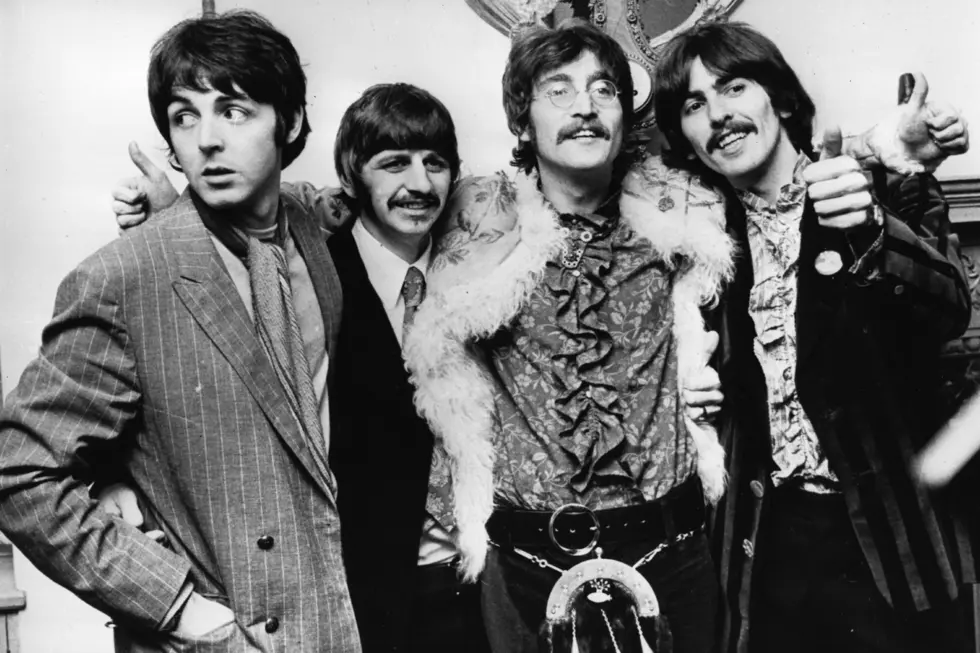
The Day The Beatles Were “1” With Nature
The song advertised as “The Beatles as nature intended” went to #1 on this day 45 years ago. Let’s go back to the day the Beatles got back their mojo with the help of a man name Jojo and a woman named Loretta.
On May 24th, 1969 The Beatles were back atop the pop charts with their seventeenth #1 single. The song “Get Back” would remain at the top of the charts for five weeks. It also marked a return-to-their-roots sound for The Beatles as it was the group's first song recorded live with no studio wizardry according to Paul Mccartney.
It truly sounds like an off-the-cuff jam session from the Fab Four in which all of us get to sit in on watching with jaws dropped and in awe of the pure musical magic that John, Paul, George and Ringo had. This time, however, they brought in a friend to jam with them - Billy Preston. Preston, whose fingers are dancing across the electric piano on the track, became the first and only non-group member to have his name credited on a Beatles song.
McCartney wrote the following for the song's press advertisements:
“We were sitting in the studio and we made it up out of thin air… we started to write words there and then… when we finished it, we recorded it at Apple Studios and made it into a song to roller-coast by.”
Here are some other very cool notes on Get Back courtesy of one of my favorite websites songfacts.com:
1. Early versions include the line "I dig no Pakistanis." The song began as a commentary about immigration, telling people to "Get Back" to their own countries. It was meant to mock Britain's anti-immigrant proponents. Paul McCartney thought better of it and made the lyrics more obscure.
2. A live version on the Apple rooftop ended the movie Let It Be. This is what The Beatles were playing on the Apple rooftop when the police shut them down. The album version is a studio take with the end of the rooftop concert spliced on, complete with comments to make it sound live.
3. "Get Back" was going to be the title of the album. The concept was The Beatles "getting back" to their roots and playing new songs for a live audience without any studio tricks. This song came closest to capturing that spirit, but the album became something completely different when they decided to scrap the idea of a live album. Glyn Johns, who engineered the sessions was asked to put the album together from what were really rehearsal tapes. After he put the album together, it sat around while the Let It Be Movie was being edited from the film footage of The Beatles rehearsing in the studio and playing on the rooftop. During this time, The Beatles made the Abbey Road album, released it, and broke up. John Lennon had Phil Spector produce his solo song "Instant Karma," which Harrison played on. They liked Spector's work and asked him to produce the Get Back album, which was re-titled Let It Be. Spector took the tapes and added orchestrations using his "Wall Of Sound" technique, and the album that was supposed to be the raw sound of The Beatles returning to their roots was released as a highly-produced final album after they had broken up.
4. At the beginning of the album version, Lennon sang, "Sweet Loretta fat she thought she was a cleaner, but she was a frying pan." He was making fun of the first line in the song.
At the end of the album version, Paul says "thanks Mo" in response to Ringo's wife, Maureen, who was clapping.
5. Lennon claimed this was basically a rewrite of their 1968 song "Lady Madonna."
6. The single version is longer than the album version. Usually it is the other way around.
Paul looked at Yoko in the studio when he sang the line "get back to where you once belong." John thought he was disrespecting her.
McCartney got the idea for this from the line, "Get back to where you should be," which came from a song Harrison wrote called "Sour Milk Sea," which was eventually recorded by Jackie Lomax.
7. McCartney changed the line to, "Get back to where you once belonged."
8. There was speculation that the character "JoJo" was based on Joseph Melville See Jr., Linda McCartney's first husband, who was from Tucson, Arizona. McCartney denied this, explaining in his 1988 autobiography Many Years From Now, that he and Linda were on good terms with See, who used the first name Melville, and that "JoJo" was "an imaginary character, half-man and half-woman." See never remarried, and in 2000 he killed himself in Tucson.
9. The Beatles met Preston in 1962 when they were both playing in Germany, but they hadn't seen each other since. Harrison asked Preston to come by the studio the next day, where he played on this and "Don't Let Me Down." Having him in the studio eased the tension and made it easier for The Beatles to put personal conflicts aside and record the album.
More From WRKI and WINE









